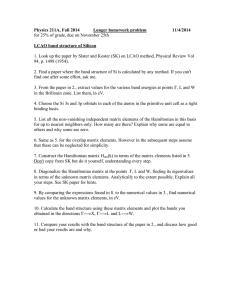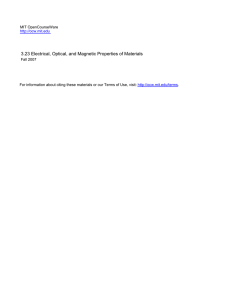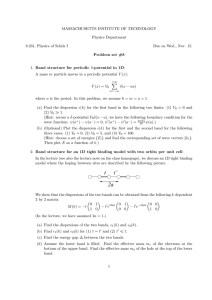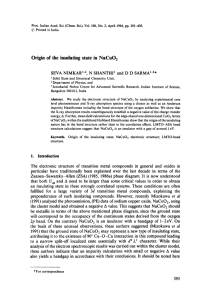1 8.511 Theory of Solids I
advertisement
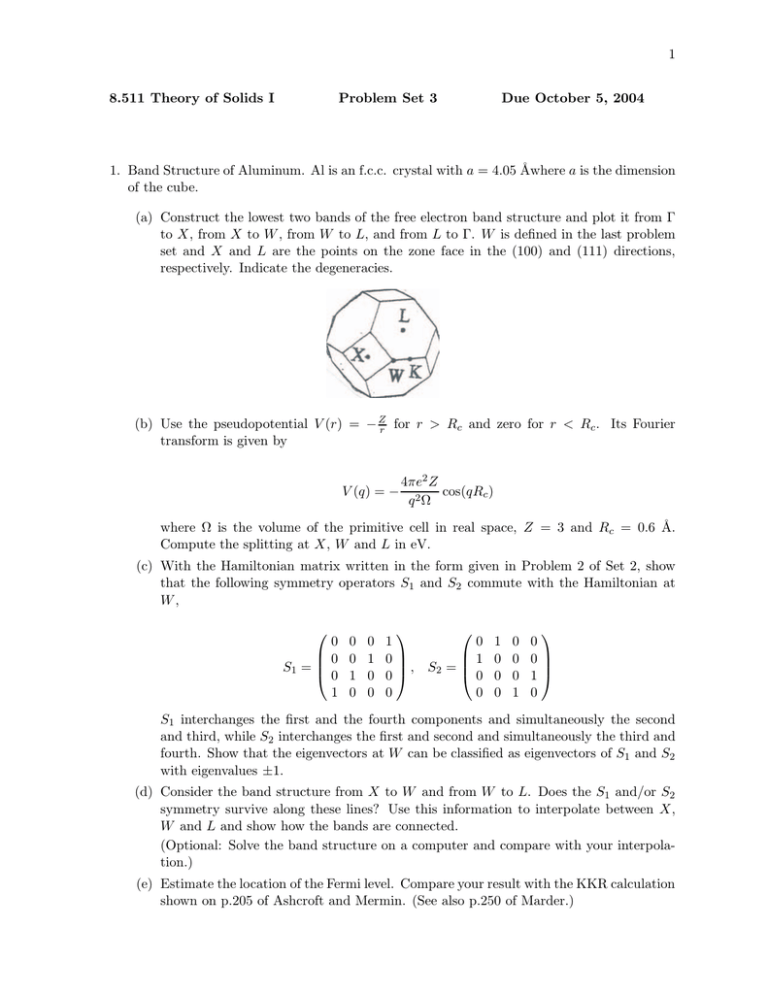
1 8.511 Theory of Solids I Problem Set 3 Due October 5, 2004 1. Band Structure of Aluminum. Al is an f.c.c. crystal with a = 4.05 Åwhere a is the dimension of the cube. (a) Construct the lowest two bands of the free electron band structure and plot it from Γ to X, from X to W , from W to L, and from L to Γ. W is defined in the last problem set and X and L are the points on the zone face in the (100) and (111) directions, respectively. Indicate the degeneracies. (b) Use the pseudopotential V (r) = − Zr for r > Rc and zero for r < Rc . Its Fourier transform is given by V (q) = − 4πe2 Z cos(qRc ) q2Ω where Ω is the volume of the primitive cell in real space, Z = 3 and Rc = 0.6 Å. Compute the splitting at X, W and L in eV. (c) With the Hamiltonian matrix written in the form given in Problem 2 of Set 2, show that the following symmetry operators S1 and S2 commute with the Hamiltonian at W, ⎛ 0 ⎜0 S1 = ⎜ ⎝ 0 1 0 0 1 0 0 1 0 0 ⎛ ⎞ 0 1 1 ⎜ ⎟ 1 0 0⎟ , S2 = ⎜ ⎝0 0 0⎠ 0 0 0 0 0 0 1 ⎞ 0 0⎟ ⎟ 1⎠ 0 S1 interchanges the first and the fourth components and simultaneously the second and third, while S2 interchanges the first and second and simultaneously the third and fourth. Show that the eigenvectors at W can be classified as eigenvectors of S1 and S2 with eigenvalues ±1. (d) Consider the band structure from X to W and from W to L. Does the S1 and/or S2 symmetry survive along these lines? Use this information to interpolate between X, W and L and show how the bands are connected. (Optional: Solve the band structure on a computer and compare with your interpolation.) (e) Estimate the location of the Fermi level. Compare your result with the KKR calculation shown on p.205 of Ashcroft and Mermin. (See also p.250 of Marder.) 2
